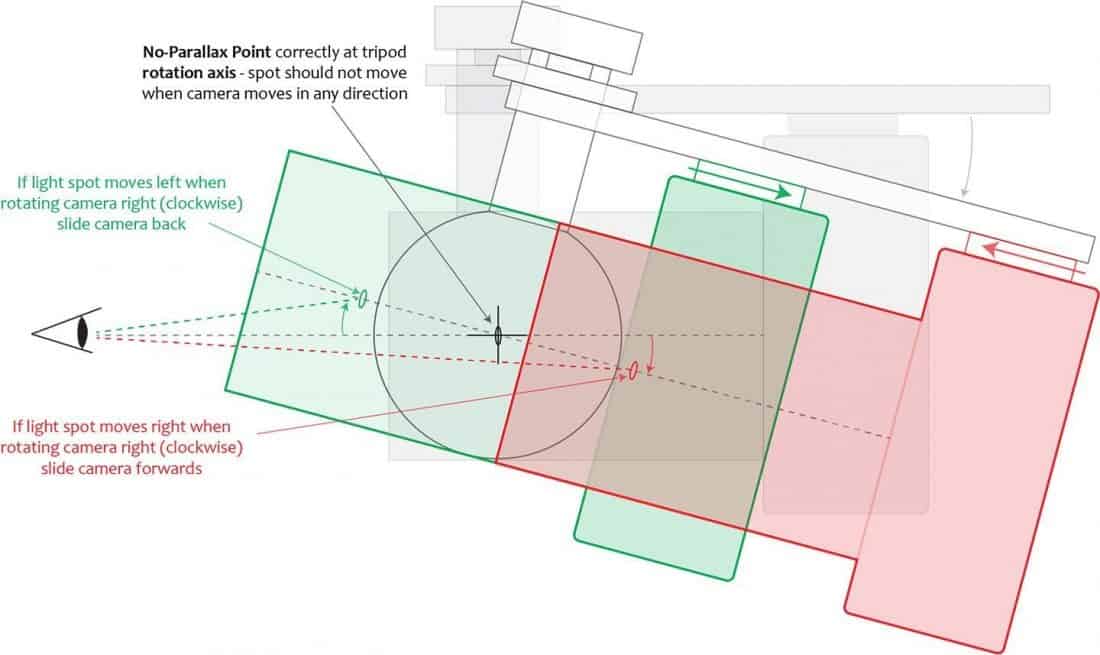

This is another reason to mark the NPP on your lenses so that you’ll have an easier time re-establishing it with new gear.įigure 5. Finally, if you purchase a new camera and tripod mounting bracket, the NPP distances you previously used may no longer work (even though you might be using the same lenses, and regardless of how you initially established the NPP for your lenses) unless the brackets for both cameras are aligned with the sensor plane. That’s because for this particular L-bracket, the side and bottom mounting plates are not aligned in the same location relative to the camera’s sensor plane. You’ll also notice that the NPP with the same lens and focal length vary with the camera’s orientation. Incidentally, if you own the same camera and lenses I use, you can’t necessarily use the data shown in figure 4 to establish the NPP unless you also use the same camera L-bracket I do (Really Right Stuff BGE11-LB).

Then the camera will be correctly positioned on the NPP of the lens until/unless your using a ballhead and reposition vertically off level (see Axis of Rotation and Tripod Heads near the end of this tutorial for how to compensate when using a ballhead or multi-way panning head – this is where marking the NPP on the lens is handy). If that’s the case, just mount the camera on a pano slide and position the slide on the tripod at the point where the slide’s scale equals the NPP/entrance pupil distance provided by the manufacturer. If you’re lucky, the tripod mounting plate or L-bracket that you purchased for your camera will have been designed to mount on the base of the camera or accessory grip so that it’s center coincides precisely with the camera’s sensor plane. This is the mark you’ll use to align the slide on the tripod head to control for parallax. Then mount the camera on a pano slide (also referred to as a NPP or nodal slide) that has a distance scale marked in millimeters, making note of where along the scale the NPP occurs (Figure 5). Since the NPP will vary with magnification, a cheat sheet is needed if a zoom lens is involved (Figures 4 & 5 I like to record NPPs for focal lengths printed on the zoom ring). If it’s a prime lens, I recommend marking the NPP on the barrel, or if possible apply gaffers tape to the barrel and mark the NPP position on the tape for future reference. Armed with this information, attach the lens to the camera and measure the distance provided so you know where it occurs along the lens barrel (but remember that the actual NPP is in the center of the lens!). For example, Zeiss reports the entrance pupil distance from the focal plane in the lens’ specification sheet.
#Panorama stitcher adjust for paralax how to
In this tutorial I’ll try my best to explain how to establish the NPP for a lens.Īsk the Manufacturer or Consult the User Manualįirst, you might be able to get data from the manufacturer on the distance of the optical center of their lenses from the sensor plane or camera-lens interface in millimeters (mm).

The NPP is equivalent to the lens’ entrance pupil, which is the location of the optical image of the physical aperture as seen through the front of the lens. By rotating the camera-lens combination around the lens’ no-parallax-point (NPP) we can effectively eliminate parallax errors.
#Panorama stitcher adjust for paralax software
If parallax can’t be avoided, then the software used may not be able to stitch the photos successfully, or very well. But one important aspect to consistently getting good results is to avoid major parallax errors in the final, stitched image. I’ll cover the process of capturing images for stitching in a separate tutorial. As this image illustrates, stitched photos don’t have to be panoramas. This shot is comprised of 3 vertically stitched horizontal images to eliminate aberrations along the edges and corners of the sky, and cropped back to original size. The Milky Way shining over a campsite at Paradise Beach along Lake Superior’s North Shore near Covill, Minnesota.


 0 kommentar(er)
0 kommentar(er)
